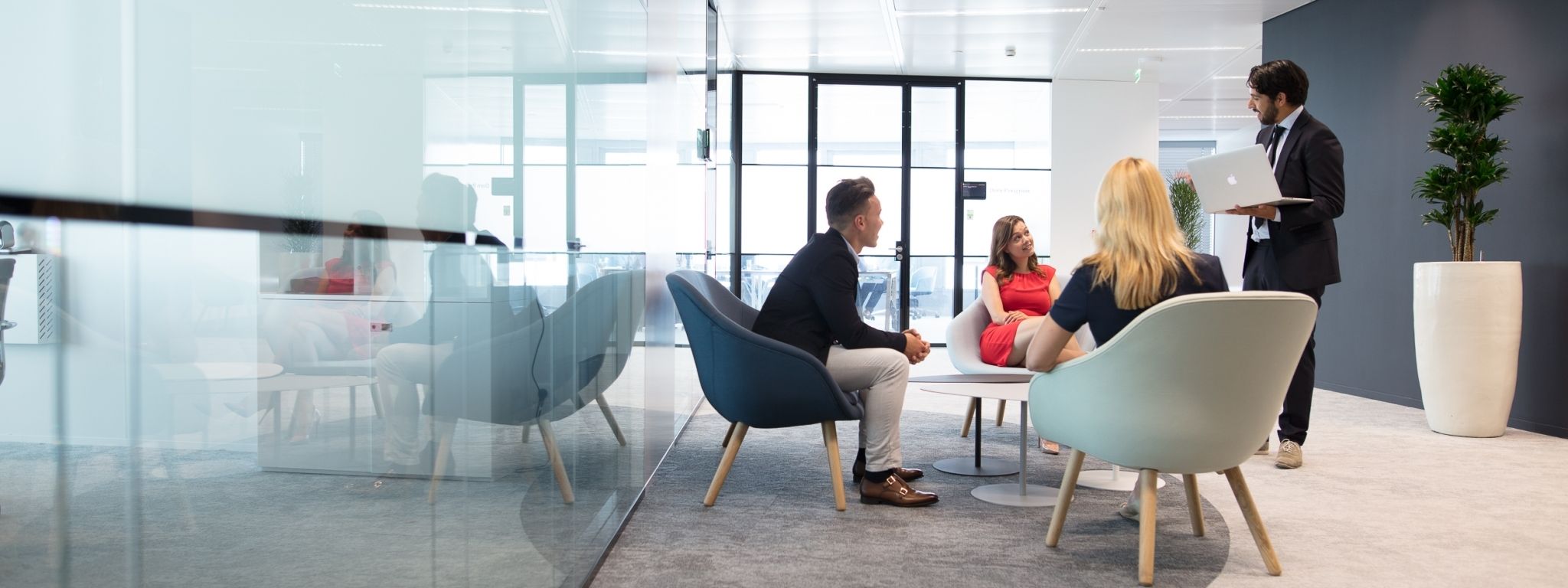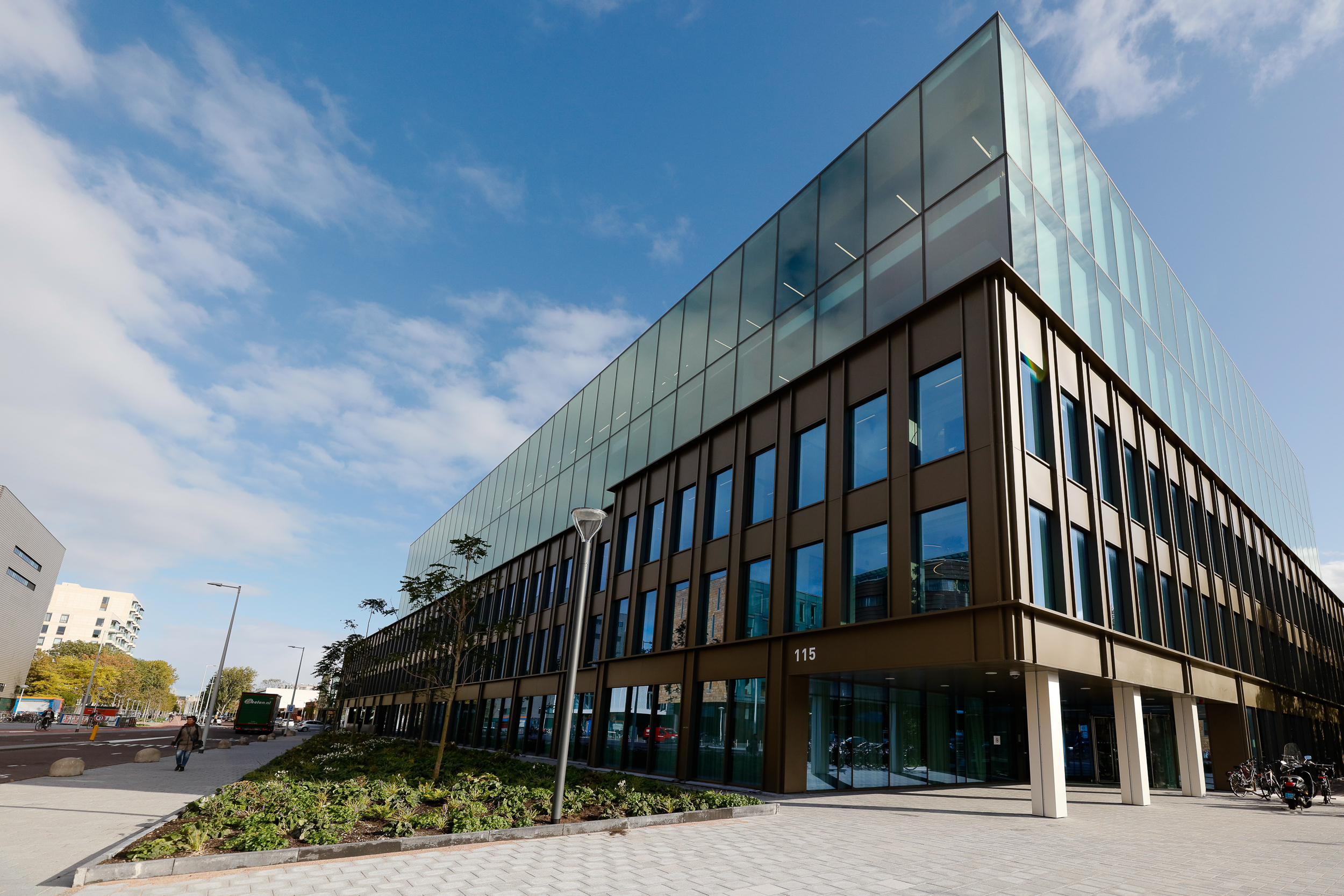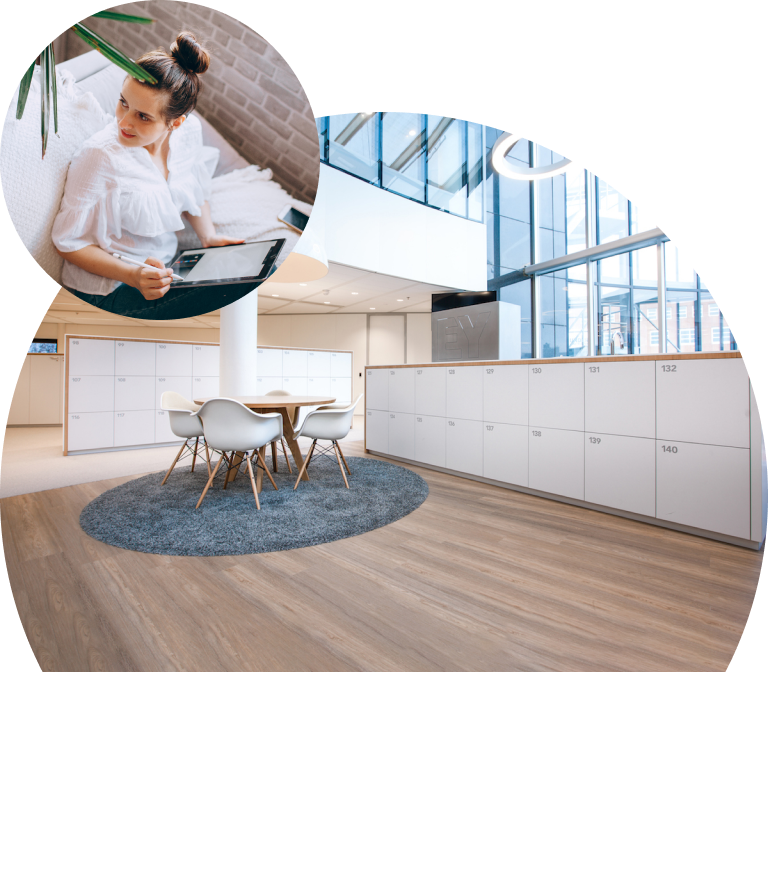When we asked the CIO of Deloitte, France, Marc Zuili, what the workplace of the future meant to his organization, he talked about a workplace that’s flexible, where technology enables everything and data optimizes utilization. A workplace where people are no longer tied to their desks, where there is freedom of movement, a workplace where people can work from anywhere – where people feel good. Sounds like a 2021 Return to the Office plan? Not really. Deloitte France settled into their new HQ in Paris where they implemented this way of working in 2017.
With the accelerated adoption of dynamic and hybrid working, more and more companies are adopting similar views on what the new workplace should look like. Also Google shares this vision. Sundar Pichai, CEO, Google, announced that they are reimagining a hybrid workplace to help people collaborate effectively across many work environments and enabling them to ''work from anywhere’’.
What’s more, Hybrid working allows most companies to drastically cut down on facility, furniture and office space waste by making their office be used on-demand. Supporting sustainability standards at the same time. The hybrid-working model is a win-win. So, what does it take for a workplace to become future-ready, and enable this concept for people to work from anywhere?
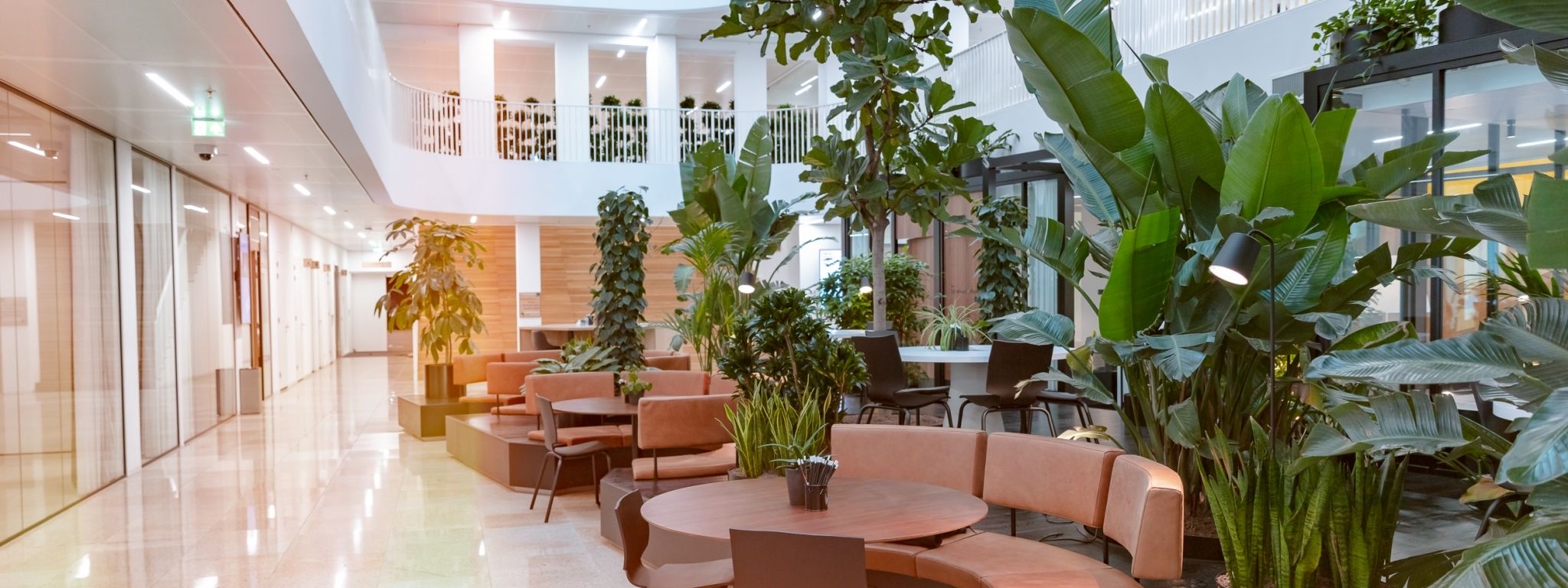
What is a workplace of the future and why is this term gaining so much popularity?
At Vecos we believe that a successful workplace is one where everyone can work as it fits them: collaborate, get inspired, be productive and work in any way they want, anywhere they want – A fully dynamic working environment, which can be a mix between working in the office as well as from another location such as your own home.
A Hybrid way of working is a model where employees can actually choose where to work from: a combination of remote working, working on-the-go, and working at the office. It promotes autonomy, flexibility, collaboration and improves the trust between employers and their managers.
According to Statista, 66% of workplace leaders said that their company is looking to redesign their office space to support hybrid working. Moreover, 77% of employees want flexible remote working options to stay post-pandemic.
The biggest implication for office spaces to support hybrid working, is to introduce a form of flexible, dynamic working such as hoteling or desk sharing. That type of flexible workplace is actually not really a new thing. It was already popular in countries like Australia, New Zealand, The Netherlands, Sweden, Finland, etc., but Covid-19 made it popular worldwide. We went from a steady evolution to an immediate jump to dynamic working, combined with accelerated adoption all across the globe.
Does that mean the office is redundant? Absolutely not! The office cannot simply go away. But, it can definitely become more dynamic and flexible. Hybrid work is meant to include more freedom in when and where people work. It gives employees more control and autonomy over their work so that they can balance both home and work in a healthy way. BBC calls it the best of both worlds: structure and sociability on one hand, and independence and flexibility on the other.
on the other.

But why go Hybrid? What are the benefits of Hybrid working?
- Cutting down on furniture and office space waste whilst getting a step closer to sustainability
We often talk about cutting down corporate waste by using less paper, saving energy using green office products, but what about facilities, furniture and square meters of office space? Over 10 million tons of environmentally harmful furniture waste, known as “F-waste,” end up in landfills annually in Canada and the U.S., according to Canadian Interiors.
With hybrid working, people are not at the office as much as they used to be. So, there is no need for fixed facilities for people anymore. Desks, Lockers, Meeting Rooms – all these facilities can be self-service and available on demand, thanks to technology. Think about it – You have 500 lockers for 500 staffs, out of which maybe a 100 will visit office daily now. So, you actually end up wasting 400 lockers and the entire floor space. With dynamic lockers, whoever is in the office can book one and release it when they are done for the day. And with real time data, you can understand employee behavior and optimize these resources even further - to the point of zero wastage. Read Deloitte UK’s case study to understand how they reduced their overall storage capacity by 60%.
Encouraging a more optimal application of resources also means you’ll use less space and energy, thus increasing your sustainability standards.
- Increased productivity
This shouldn’t be too hard to derive. People working at their own time will utilize their day better and thus, will be more productive. Before the pandemic, managers thought that if people were in control of their work hours, they would simply choose to work less. But the pandemic proved them wrong and how!
Also, choosing to work from home for a few days a week means they save time traveling, focus on work without the hustle & bustle of their workplaces. With Hybrid working, employees can choose when they will be at their most productive spells and work accordingly. They focus more on the quality of work rather than the no of hours worked. Also, employees are less likely to be stressed when they leave the traditional 9-5 system of working. This will not only help increase workplace productivity but also foster better communication and relationships in the office.
- Better work-life balance
With the millennial generation of workers projected to take up 75% of the workforce by 2025, many leaders think it’s time to redefine what work-life balance looks like. It is an important aspect of a healthy office environment and with the increasing adoption of hybrid working, the future looks bright.
Hybrid way of working ensures that your people can work on flexible schedules - begin and end their workday as and when they see fit. With flexible working hours and the ability to choose a working environment, your people can attend to both work and family as and when required. Also, not to forget, freedom of ‘’working from anywhere’’ has a significant positive impact on employee satisfaction. It helps reduce stress and prevent burnout in the workplace.
According to EY, 54% of employees globally would quit their jobs if not provided post-pandemic flexibility.
And needless to say, happy employees tend to stay with their employer longer and are more productive.
- Improved Collaboration and Communication
With the increased adoption of the hybrid way of working, employers are designing their workplace strategy keeping flexibility in mind. When required, people can communicate virtually and when there needs to be a brainstorming session, the team can meet up in the conference rooms, face-to-face – the best of both worlds.
Another way to increase collaboration in hybrid workplaces is to create an agile and dynamic working environment with activity-based workspaces – meeting rooms, brainstorming rooms, calling booths, kitchen and coffee corners, etc. with the aim of encouraging interdepartmental collaboration, generating diverse ideas, and facilitating innovation.
Read More: Your Guide to successfully transition into a dynamic workplace
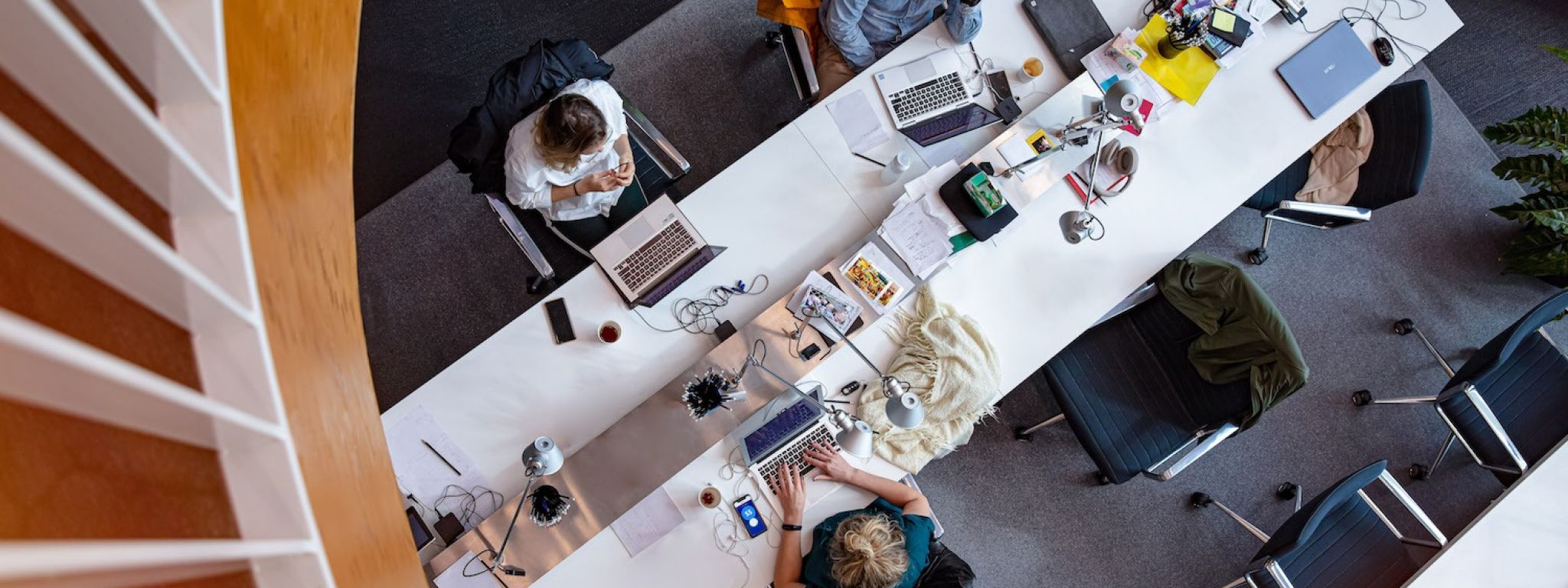
- Cutting down on non-essential costs
With an increasing percentage of people working remotely, employees no longer are in the need of having dedicated working spaces. Anyone can choose a place in the workplace based on their activities for the day. So, by moving to an activity-based workplace or adjusting their workspace design to imitate an ABW, organizations can save considerable costs. By not having to maintain the entire workforce every day, employers can save on electricity, office supplies, utilities, etc. Also, with some number of employees working from home, companies will save a considerable amount on travel allowances.
Now, that we have the benefits, what makes a workplace hybrid? Key elements of hybrid working:
- Flexibility in work hours: The traditional 9-5 lifestyle in a brick-and-mortar office doesn’t work anymore, especially with millennials and Gen Z playing a prominent role in the workforce. More often than not, 9-5 and traditional working has been linked to a decrease in employee productivity and energy.
More and more companies, especially after the pandemic, is opening up to flexible schedule when it comes to its employees. The concept is employees can create a work schedule that works best for them and schedule their workday according to that schedule.
- Working From Anywhere: With hybrid working, flexibility doesn’t come only with time but also with where your people want to work from. This concept was already brewing before the pandemic and people were already asking, with the technological support and the digital connectivity, do people need to be in the office every day of the week?
- A question that’s been sufficiently answered during the last year. With the pandemic, we learned that we don’t need people to be present in the office every day or in fact, be in the same city or country.
- Technology to support flexible working: With the age of technology and connectivity, the way we define work is changing. With the onset of Covid-19 and remote-working, workplace technology changed nearly overnight.
Office workspaces were replaced by home offices or kitchen slabs, in-person meeting was replaced by Microsoft Teams or Zoom and it made communicating with your colleagues super easy and also all that from the comfort of your home. Tools like Asana and Jira helped to keep your entire organization focused on their goals, projects, and tasks and white-boarding tools like Miro made remote brainstorming 10x more productive and fun!
Technology Will Power Hybrid Work and it’s no news! The faster the adoption of technology in the workplace, the better the collaboration and thus, faster adoption of hybrid work. So, pre-pandemic, offices were places where people got the job done. Post-pandemic, it’s a place where people will occasionally go to brainstorm and engage in important meetings. So, what does it take to re-design a workplace for the new way of working?
Designing a Hybrid Workplace: Redesigning the office to maximize collaboration
As established, the concept of fixed working space is a thing of the past. Employees today want more autonomy, flexibility, and agility in their workplaces. With dynamic working, your employees can enjoy a brainstorming session on the first floor and then move to the meeting rooms to convert leads on the third floor – all in a matter of a few hours!
As the new hybrid of working is becoming the new normal, companies are taking a long, hard look at re-designing and refurbishing their office spaces. Companies and organizations that were not ready are pushed over the edge now. Suddenly everything had to change and agile work policies needed to be adopted in a meaningful manner. People will partly work from home now and in the future and companies will need to demonstrate trust which is integral to the success in shifting workforces away from the 9-5 setup.
But, designing a working space to cater to the hybrid way of working doesn’t happen in a day. You need to first realize your vision and then understand the barriers standing in your path and leverage technology to break those barriers. Workplaces and management across industries are keen to figure out how they can easily adapt to the changing conditions and can reskill and upskill their workforce to coordinate and deliver better in the post-pandemic era.
The good news for companies who are only now adopting this way of working is that they can learn from organizations that have already adopted flexible working and have been through all the phases.
Who’s ready for a Hybrid office?
Dynamic workplaces offer a profound opportunity to benefit both the employees as well as the employers. Through technology and dynamic working, businesses can now truly connect with their people, understand existing assets and optimize spend to create a frictionless workplace experience. This article is an attempt to just scratch the surface of hybrid and intelligent workspaces. If you are looking for exhausting details on transforming your office into a dynamic workplace, speak to our experts now.


